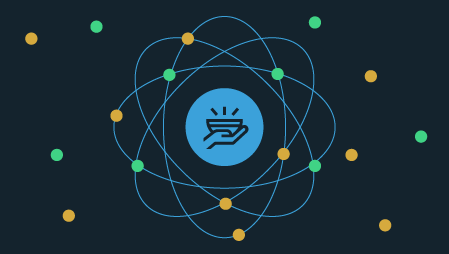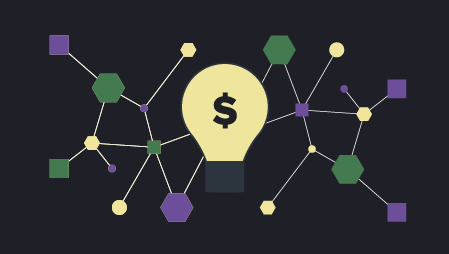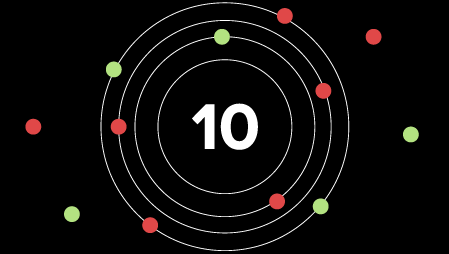Ready to learn Internet of Things? Browse courses like Internet of Things (IoT) Training developed by industry thought leaders and Experfy in Harvard Innovation Lab.
Any company can create the right killer app that solves the need of their specific customer.
Every new technology trend brings speculation and talk about a “killer app” that will be the solution to all of our problems.
Tech publications and blogs produce countless articles searching for the “killer app” for the iPhone, the Cloud, Blockchain, Artificial Intelligence, and of course, IoT. We’ve also even seen the same hype for development processes. I can’t tell you how many times I’ve heard that Agile is that silver bullet. Or maybe it was Lean, or Kanban? Hard to keep track.
But as a Product Manager, we can’t keep chasing the next big thing all the time. It’s true we need to understand where technology is going, but we need to be more pragmatic and realize there is no single “killer app” for anything. Particularly for IoT.
Is predictive maintenance the killer app for IoT?
>
Predictive maintenance refers to the practice of adding sensors to collect and analyze real-time data from industrial equipment to predict when it is likely to fail.
I often talk to companies who want to get into IoT by offering predictive maintenance solutions. They are interested not because they’ve spotted a customer need, but because they’ve heard that predictive maintenance is where the money’s at in IoT. In essence, somebody convinced them that predictive maintenance is the killer app for IoT.
It is true that predictive maintenance is getting a lot of traction with industrial companies, but that’s because it addresses a tough problem that those particular companies already had. Not because predictive maintenance in itself is the solution to all problems.
My advice is this: Instead of looking for the killer app for IoT, companies should focus on understanding their customer’s needs and evaluating how they can leverage the Internet of Things to solve those problems in a better, faster, or cheaper way.
In short, by understanding your customer’s needs, you can design the right killer app for that particular customer challenge.
If you stop considering IoT as a silver bullet and instead look at it as another tool in your portfolio, you can move past the hype and start working towards building real solutions.
Other innovative applications leveraging the Internet of Things
>
To drive this point home, I’d like to share a few real-world applications in use today. Notice that these products are not creating a new category of problems. Instead, they provide more efficient solutions to existing customer problems. These companies understood their customer’s challenge and then leveraged IoT by asking the question, “How can I provide a better solution by acquiring and processing real-world signals from my customer’s environments?”
If you think about it, acquiring and processing real-world signals is one of the key attributes of IoT, so with that in mind, what innovative solution could you create for your customers?
1. Reducing traffic congestion via smart parking
As cities grow, so does their traffic congestion. And in many cities, a big contributor to this congestion is lack of parking spaces. Think about cities like San Francisco or New York. Drivers spend a lot of time circling around buildings trying to find a parking space. This in turn increases the traffic of already congested areas.
Some cities are looking at IoT to address this issue. By placing sensors on the street and on lighting posts, cities are able to track which parking spots are available and offer this information to companies who can monetize this data via apps or other types of services.
The parking information is also aggregated in the Cloud and allows cities to study traffic patterns to plan for better solutions in the future.
2. Optimizing waste collection
A company in the Netherlands is using the Internet of Things to track waste through its complete lifecycle. They place sensors in each of their bins to inform waste collectors when the bin is full and needs attention. This allows them to optimize collection routes and minimize the time and effort it takes to collect this waste.
Their collection trucks are also equipped with load sensors that determine, in real-time, the amount of waste that the main disposal center can expect as the trucks approach their destination.
3. Increasing resiliency in the electric grid
To increase resiliency in the electric grid, utilities around the world are leveraging IoT solutions to detect where power was interrupted so they can send a team to fix it right away. It used to take hours before utilities could determine the exact location of a fault. Today, they have this information in real-time, plus they can apply machine learning to anticipate the location where faults are likely to occur.
4. Helping with conservation efforts
The applications for the Internet of Things go across all industries and verticals. For example, teams in Africa are leveraging IoT to prevent elephant poaching. The teams tag each elephant with a smart collar and track the elephant’s location and motion patterns.
The information collected by the collar is analyzed in the Cloud by specialized algorithms. Some of these algorithms can detect when an elephant becomes immobile, which could be a sign of an attack by poachers. The system sends alerts to the wildlife management bodies who provide fast response.


The Bottom Line
>
As I mentioned at the beginning of this post, there is no one, single killer app for IoT. Instead, any company can create the right killer app that solves the need of their specific customer, in their specific industry, and vertical.
In this post, I shared a handful of examples, but we are seeing applications in all industries, from Healthcare, to Energy, to Smart Agriculture, Smart Buildings, Transportation, etc. Companies in all industries are looking to adopt IoT as the catalyst to improve their existing solutions.
So as a Product Manager, where do you start? Forget trying to chase the killer app. The first step is to have a clear understanding of your customer’s needs.
The second step is to understand how you could improve your solution by collecting and processing real-world signals and therefore, providing a better, faster, cheaper, or more innovative solution to your customer—one that provides a lot of value and they can’t wait to give you money for.
Originally posted at iot for all



